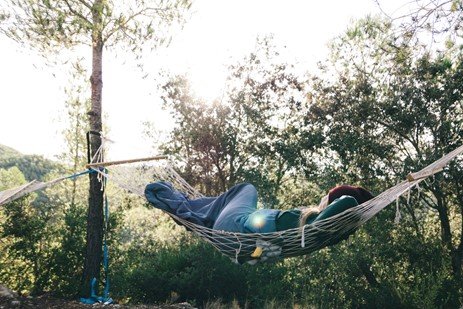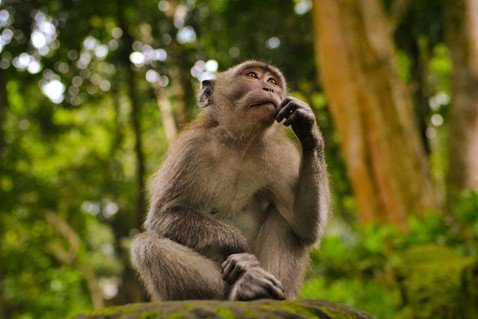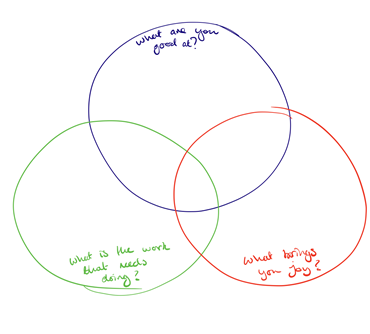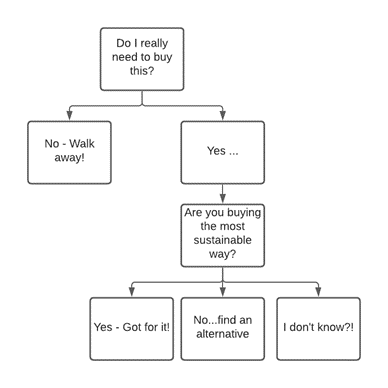Finding your impact

Creating change in the world is a tough job. Fighting the good fight can be disheartening; you’re often one despairing news story away from throwing your arms up and letting the world slip towards the inexorable, irreversible effects of climate change.

After all, how can I make any difference? When we compare ourselves to the unflappable, unstoppable Greta Thunberg or ever eloquent David Attenborough and his heartstring-tugging documentaries, all the small things we could do can pale into insignificance.

But, however inconsequential they might feel, these actions are important.
The sheer convenience of the 21st century and lack of clear information means that a momentary lapse in concentration can instantly plunge us back into a consumption intensive lifestyle resulting in that inevitable guilt, as we unwrap yet another internet purchase we didn’t need. We shouldn’t beat ourselves up about this though. Every step forward is a positive one.
So, we won’t delve too deeply into the loss of numerous species and ecosystems, or the very real and present suffering of millions of people around the globe who are today that are already feeling the effects of climate change. Instead, throughout the Climate Conversations, we’ll focus on what you can do to help; providing context and a guide to making a real positive difference.
Below we have set out how you can start out — or get back — on the road of making an impact in the efforts against climate change:from grand endeavours to every day adjustments.
The Venn Diagram of Change
So, maybe the weight of the world and all its future generations is too much to consider. Maybe it’s enough to make you shut down and completely ignore everything — after all, we all have our own issues to deal with. But that’s okay, we don’t have to be responsible for solving all the world's problems at once, far from it. That would, in fact, be an incredibly inefficient way to do things.
The idea behind this ‘technique’ is to focus your efforts on the areas that you are passionate about and that you can make the most difference in — it might even help you to come up with new actions you hadn’t previously considered.
I first heard this on the brilliant climate podcast “How to Save a Planet” hosted by Dr. Ayana Elizabeth Johnson and Alex Blumberg (which you should check out if you haven’t already — they do a great job of making the climate conversation approachable and understandable). and The Venn Diagram of Change is essentially a cut-down version of the Japanese concept of Ikigai.
Here’s what to do. First, draw out three overlapping circles (see below) and write the following in each one:
- What are you good at? Which skills, resources, networks do you bring to the table?
- What is the work that needs doing? Which climate solution will you focus on?
- What brings you joy?

The last one is the most important, for the reasons mentioned above. This is going to be a long road, you may focus on something you’re passionate about — you're always more likely to be successful in pursuing something you enjoy.
The beauty of this is that everyone will come up with a different answer. There are many things we can do to combat climate change and many individual skills we need to harness to be successful.
As Johnson says “I think this has been a real shortcoming of the environmental movement, asking everyone to do the same thing: everyone march, everyone vote, everyone donate, everyone spread the word...and of course, do that! However, if we don’t ask people to bring their talents to address all this work that needs to be done then, what a waste that would be.”
Challenge yourself to think about the little things
The Venn Diagram of Change encourages you to think about how you can make the biggest impact, but often small changes and thoughts are the ones we need to analyse most closely. Day to day, we buy a lot of things and make a lot of choices without even thinking, and it’s these decisions that have contributed to the unsustainable consumption and waste production that have forced us to this tipping point.
Here is an easy to follow decision flowchart to ask yourself each time you make a purchasing decision (big or small!):

Often you will find yourself in the “I don’t know” bucket. That’s not that surprising, the world is a complex place. Do research and find out more, or ask your friends, family, or colleagues — someone may have already thought about it and it can be a great way to start a positive climate conversation.
Set positive achievable climate goals
For each of these techniques, it is important to look at positive outcomes. If your overarching passion is too hard to define, sometimes simple goal setting can be the way forward. The same way you might set yourself fitness goals or professional targets, set yourself achievable, positive climate goals.
For example instead of ‘cutting meat out one day a week’, try ‘learning one new vegetarian recipe a week. It's a small step but in two months you’ll have more than enough recipes to plan a week of vegetarian meals, and have learnt something new each week.
This also helps spread the word ‘Ah cool - what did you learn?’ rather than “I miss beef”. And while you're eating your dinner, you can ponder your Venn Diagram of Change, and plan your next big step.
Let us know how you get on!
The idea of Climate Conversations is to start exactly that: climate conversations. Hopefully this has given you some ideas on how you can make a start, keep going or even change the direction of your climate efforts. If so, it would be great to hear about any thoughts or actions you have taken.
Images from Unsplash: Jukan Tateisi, Daan Stevens and Juan Rumimpunu.
